As told by me. And in alphabetical order.
And yes, 11 days in a country makes me an expert, on eating at least, if nothing else.
I’ve done my best to share the correct pronunciations.
Where available, I’ve included photographs – enjoy!
Banku
An example of the variation of fufu (a sticky ball of cooked/pounded dough) is the banku and kenkey, dumplings formed from fermented cornmeal dough. Banku are boiled while kenkey are partly boiled then finished by steaming in banana leaves
Coconuts
Every street corner has a coconut cart, where able bodied men wielding machetes are happy to slice off the head of a young coconut so one can drink of its youth-giving waters. Once you’re done, they are also happy to break the nut open and make a scoop with which you can consume the young flesh. According to our tour guide, if a hospital runs out of saline waters for ‘drips’, the waters from a carefully opened coconut can be used to restore life and vitality to the ill person.
Chocolate
If there’s one product Ghanaians are proud of, it is their cocoa and chocolate. My children fell in love with the ‘GoldTree brand’ of chocolate which is so beautifully packed and branded, with the strip of the Kente cloth – the symbol of Africa’s cultural Heritage the world over, and not only of Ghana .
Akuafo Bar: This blend of milk chocolate flavoured with lemon is a tribute to the hard-working cocoa farmers in Ghana who produce the priceless beans that are the base ingredient for any good chocolate. “Akuafo” is an Akan word for farmers. Akuafo bar GoldenTree chocolate is therefore a dedication to farmers whose hard work and sweat sustain the Ghanaian economy
There are various flavours – lemon, orange, coffee and of course the regular milk and dark. So what does it taste like? ‘Just refined’. What do I mean? It tastes of cocoa in a rich, chocolatey way. The initial texture is not as smooth as perhaps the finest Swiss chocolate but it does have a great ‘finish’ . I love the fact that it is hard, and each bite has a pleasant crunch that lends substance to the whole choccing experience. And the orange version is absolutely wonderful!
To this day, cocoa is produced primarily by independent local farmers with small to moderate-sized holdings, not on the large plantations used in many parts of the world and the chocolate bars produced by the Ghanaian Cocoa Processing Companies, one of the largest chocolate companies bears this witness as the names are tributes to farmers).
Corn Grits
I had these for breakfast, with milk and sugar. In direct contrast to the way the Americans have it, which is always savoury and never sweet. The first time I came across corn grits was in a recipe in Momofuku, the cookbook which threw me completely. See to me, corn grits was similar to oats, and confined to the sweet side of the breakfast table. But no, in the cookbook, David serves them up with Shrimps. I was totally put off. Now, after trying them, I am willing…..if somewhat reluctant to try the savoury version!
Fish
There is an amazing variety of fish off the Ghanaian coast, including Salmon, Tuna and Herring. It is a sight to watch the fishing nets pulled in, hours after fishing boats have reached the shores, pulled in by men, women and children, singing songs to strengthen the resolve to fight sea and bring in the catch. At the Ankobrah beach, close to the border with Ivory Coast, we looked on as a catch was made, and sold to market women by the basin.
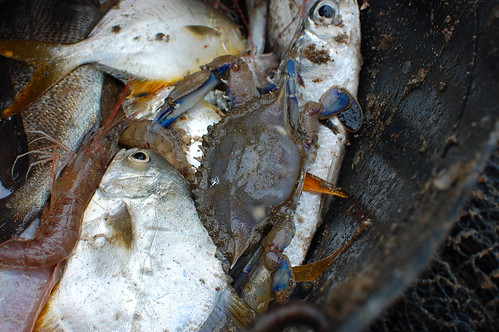
Fresh Pepper Sauce
This is a simple, uncooked sauce made of ground tomatoes, onions and fresh green scotch bonnets. In Nigeria, it forms the base of our ‘stews’. In Ghana, it is served at lunch or dinner with Banku, and grilled Tilapia. I was skeptical till I tried it! Wow, I couldn’t stop eating it. It is meant to be served ‘raw’ and only lightly seasoned with some salt. It was hard for me to believe that a blend of ingredients which I normally cook to smithereens could yield a different sort of deliciousness served in the ‘nude’.
Fufu
A mixture of pounded cassava and boiled plantains, essential to Ghanaian cuisine. It is typically a lunch/dinner preparation and is often made from scratch. Part of the evening villagescapes have women and helpers, sitting outside with few words – most of the sounds are produced by the heaving, lifting and dropping of a flat-bottomed pestle.
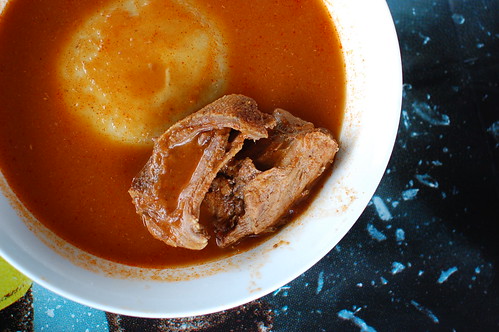
Gari Foto
According to the Betumi Blog, ‘Gari foto is also called gari jollof, and is similar to classic West African jollof rice, which is a one-pot stew and rice dish. The main difference is that gari foto is faster, since you don’t have to wait for it to cook as you would rice. While it was once a humble end-of-the-week-leftovers dish, today it is just as likely to be served at dinner parties in Ghana.’
Gari, is a cassava meal made from fermented cassava, and ground into a dry, grainy mixture. It can be soaked in cold water, cooked in hot, sprinkled over foods dry…and incorporated in baking recipes. It has a slightly sour, sweet flavour and is loved across much of West Africa.
Foto, in the Ga (Kwa) language of Ghana means ‘to mix’, thus gari foto means mixed gari.
There are various versions – some which incorporate diced vegetables and fried eggs and a simple ‘Students staple’. See shito entry.
Jollof Rice
A one-pot, tomato-sauced/stewed rice; commonly made in Ghana with Jasmine rice. The best Jollof we had in Ghana was made in a Spanish ‘cafe’ and appeared to be stir-fried in the manner of Chinese Fried Rice.
Kelewele
Popular, evening street food of cubed, ripe (sweet) plantains, tossed in a mixture of spices like fresh/dried ginger powder, black pepper, chilli powder and deep fried. Delicious!
Kenkey
Dumplings formed from a mixture of fermented maize (cornmeal) dough and raw maize dough. Kenkey are partly boiled then finished by steaming in banana leaves, in contrast with Banku which is boiled. It is popularly served with Fresh Pepper Sauce and Grilled Tilapia for lunch or dinner.

Our travels took us past the town of Yamoransa where the best Fante kenkey is found and of course we purchased some…which I haven’t tried yet. As it keeps for months, mine are currently stashed at the back of my fridge – let it be known that when I unfold the package, you will catch a glimpse!
Keta School Boys
Anchovies/Herrings found in the Volta region of Ghana and sold dried, fried and fresh!
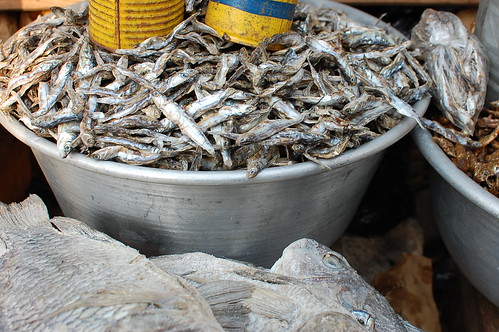
Minerals
There is a funny West African and Irish tradition of calling soft drinks ‘Minerals’. In the West, it stemmed from the addition of fizz/carbonation/’minerals’ to water and colloquially means any bottled carbonated water or soda water.
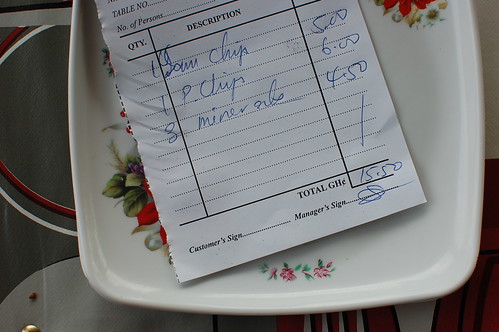
A model for Sprite below…..after a long canopy walk in the Kakum Rain Forest!
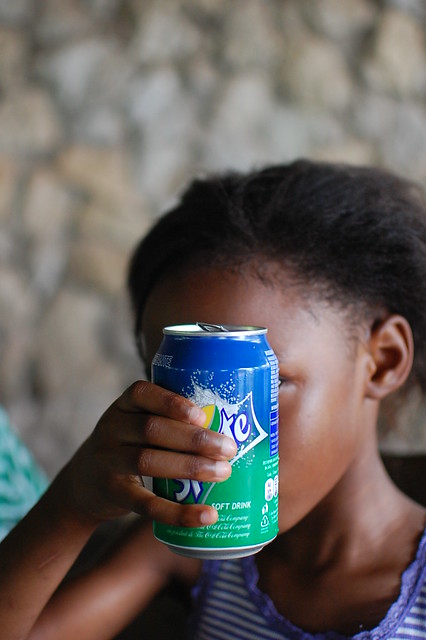
Octopus, Grilled
You can find octopus everywhere, sold in wooden and glass boxes, and hawked by women; packed in small bags…readily available at toll gates. If you want some on the spot, there is usually a pot of shito with the seller….
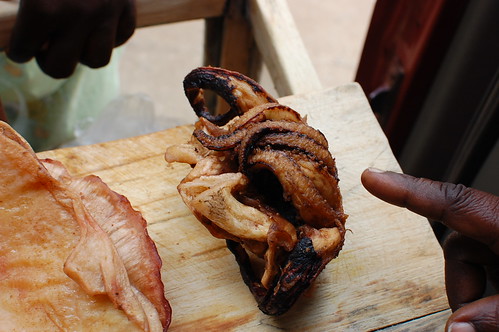
Palaver Sauce
A sauce of spinach and meats common in many parts of West Africa, with various additions and thickeners.
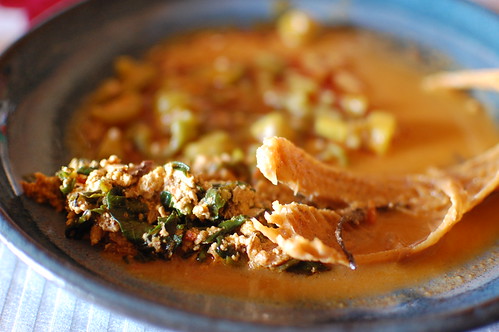
Palmwine
Affectionately called Pammy, in Nigeria. The sap of a palm tree that starts out fresh and sweet, off the tree and progressively gets fermented and thus stronger and more capable of knocking out light-headed fellows. Like me. I got some at the beach but had to ditch more than half of the bottle – I was flying home that day. With three kids in tow…and without a penchant for alcohol drinking….I thought giving drunkenness a miss was in order.

Pineapple (Long variety)
Two weeks before we headed to Ghana, I was in Lagos shopping at a new French shop, L’Épicerie, when I came across these long pineapples, different in the general slimness of the fruit and the length of it. I didn’t get any but they were touted as ‘sweet pineapples’.
Did I ever mention my pineapple allergy, which I developed in my late teens? Well, once I was ill and had pineapple and reacted badly. So for more than a decade, I’ve avoided what used to be my favourite fruit. Till Ghana.
In Ghana I saw masses of sweet pineapples which cured me of any allergy – I ate them to my fill and they were wonderfully juicy and sweet. Apparently, they were a big Ghanaian export, till western countries began to complain about the high sugar levels in the fruit, and its impact on Diabetes.
I currently have 2 heads of the said pineapple variety in my budding garden – time will tell.
Red, Red
A dish which gets its name from the 2 elements that it is comprised of, both being ‘red’ once cooked. The dish is composed of stewed black-eyed beans in a tomato sauce, often with palm oil added (Red), served with fried, ripe plantains (Red).
Rice
Though local rice is common, everywhere we went, we had wonderful steamed Thai Jasmine rice, of the finest sort. Fragrant, sweet and most delicious with Shito (next on the list).
Shito
A fragrant, hot pepper sauce available at every table in Ghana. It is made of dried seafood: fish and shrimps, ground and fried in lots of oil with ground dried red chili peppers and other seasoning. It is an accompaniment to everything good and nice.
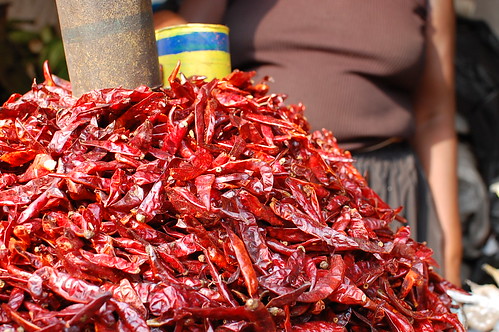
I had it in every conceivable way possible to man, except with my bowl of corn grits….It is delicious with plain white rice, spices up stews, is perfect with fish, chicken, boiled eggs, fried yams…..I could go on and on. Suffice it to say, we came back with 4 jars. The shito at that hotel was perfect – the right amount of heat and none too fishy…..which was a character of many versions I tried.
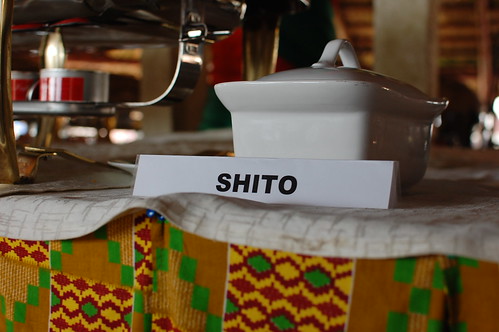
Our tour guide told us that growing up, she would always take shito to school, where they called it the ‘Student’s companion’ as it was a staple in school cupboards and could last a ‘term’ (3 months). Their school version of Gari Foto consisted of soaked gari mixed with a healthy portion of shito and eaten…..hunger never completely took over!
Soups
Most soups in Ghana, in contrast to thickened Nigerian soups are ‘light’ in consistency and serve dual purposes of dipping and drinking. Also, almost every soup has fresh tomatoes as essential on the ingredients list.
Tilapia, Grilled
We spent all of the 11 days of our holiday on the coast, where there is no shortage of fresh fish. Grilled Tilapia is a permanent fixture on menu cards and boards across town, from the local eateries to the finest restaurants. At one hotel we stayed at in Accra, we got the recipe for the wonderful marinade which was slathered on the fish. In true African style, the ingredients list came without measurements – fresh ginger, fresh green chilies (scotch bonnets), mustard and Maggi (beef bouillon) cubes.
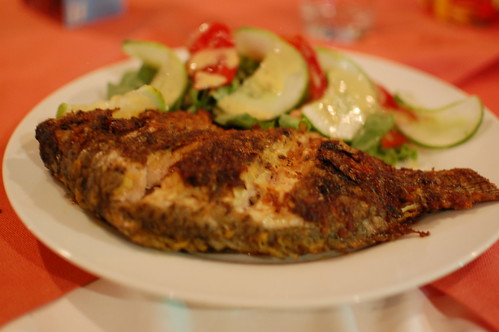
Tom Brown
A breakfast porridge made from toasted corn, which is ground into a meal/flour and cooked with water to form a porridge. It is served with milk and sugar (or sweeteners). It has the appearance of cooked wholemeal flour, with flecks of toasted/dark brown grain. It does taste nice, with hints of ‘toffee’ and caramel. Apparently, it also exists in my home country, Nigeria where it is made from dried corn, soya beans and fried peanuts.
Waakye
Pronounced ‘Waatchy’ or ‘Waatchi’ – a ‘red’ breakfast/lunch combo of cooked rice and black-eyed beans, with the red colour produced by a dye from millet leaves, in authentic recipes. Truth be told though, there are many ways to make it – In the rice cooker. On the stove top. Endless possibilities.
Werewere Soup
This tastes a lot like Owo – a Nigerian palm oil soup, albeit thinner.. Apparently (thank you Aftrad kitchen for leaving a comment), it is groundnut-based, not palm oil as I thought. In Nigeria, Owo soup is made with oil and potash, which lends a peculiar flavour to the whole dish that is well-balanced, with a hint of salt and an almost imperceptible chalkiness. I’m not sure what exactly is in Werewere but it screams Owo to me.
Yam Croquettes/Balls
These are similar to croquettes of mashed potatoes and ragout, rolled in breadcrumbs and deep-fried, except these are made with boiled, mashed yams. And are delicious with shito.
I hope you enjoyed my culinary record of Ghana.
Have you tried any of the dishes mentioned, Ghanaian style? Or are there similar dishes in your cuisine?

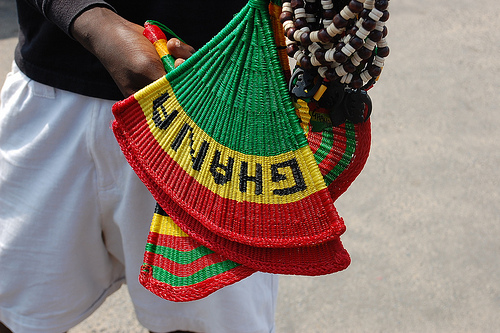

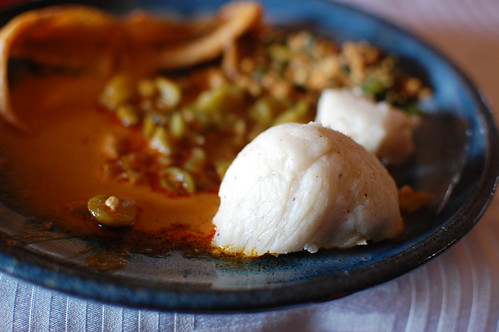

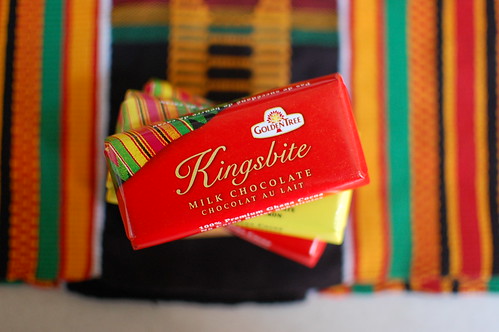
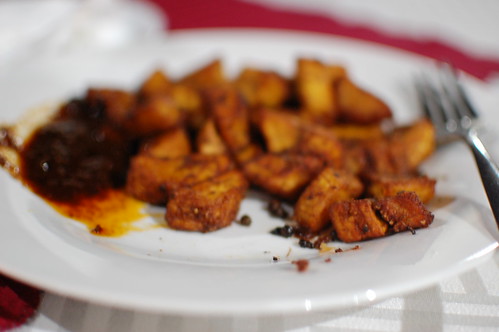
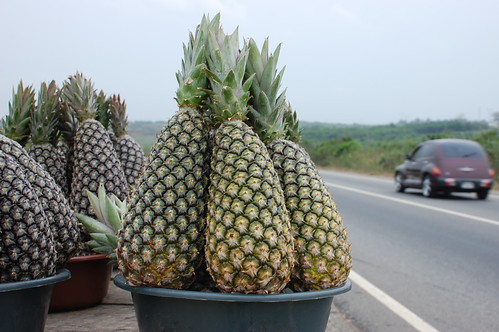
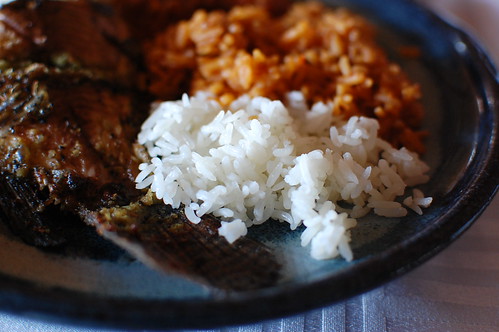
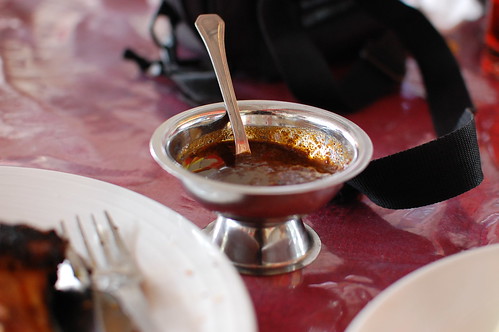
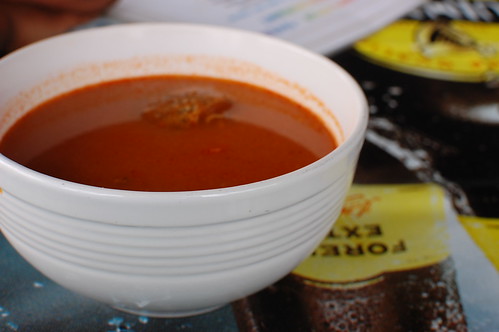


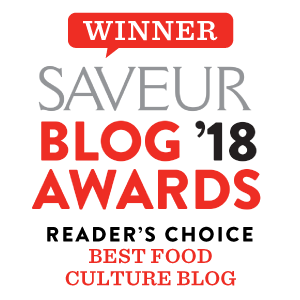
Hello Dear,
Though I have been following you on Instagram, I just came across this post of yours. Well done for educating about Ghanaian foods, good one there. Just a point of correction, wrewre soup is not palm oil based, it is similar to groundnut soup but lighter.
Good job and keep it going.
Kind regards,
Joana
[…] from 2011, 2012 thanks to Julia Cameron’s The Artist’s Way. Words that hold memories of Ghana – the first African country I visited and my feelings of moving back home, to […]
[…] like groundnuts used to be more prominent in Nigeria’s past. Like it is in Ghana’s present. But I’m not terribly bothered, especially since excellent Nigerian chocolate is still […]
The first time Waakye was mentioned was in a conversation I had with an indigene of Shaki in Oyo state and the way she described it was pretty much the same way it’s described here although she said its called Wanke at her place. I hope you post a feature on this some time soon. I’d really love to try. Love love your blog; it’s a great inspiration to me!!!!
Thank you so much Foluso.
[…] of all the street food that has sustained me the past four months. So I refer readers instead to this excellent compilation of Ghanaian food by […]
[…] from Ghana who make a mean omelette with Kobi, salted and preserved Tilapia. Friends who take you to festivals […]
[…] almost a year since we spent Christmas and New Year in Ghana. I say one has to go to the banks of Lake Tadane, in Ghana’s Western region where […]
[…] was envious of Ghanaians in December because they have great-tasting, locally produced chocolate. Till I discovered Imit’s milk […]
[…] I’ve always loved pineapple but in the early 1990’s I developed an allergy which prevented me from enjoying them…that is until last December when that ‘yoke was broken’ in Ghana. […]
I love your site. And I am oh so hungry! Please do more on Ghanaian food! Always looking to learn more!
What a great presentation of Ghanaian food! We are grateful. You’ll enjoy this piece by Kofi Akpabli on soup in Ghana http://www.allwestafrica.com/010620104548.html
What a wonderful post, as always! I love all the new things that you bring to me. As for the grits, that is so funny…I guess it is all in what you were brought up with. I love savory grits and not sure of sweet, but I know you can do it and try them our way! 🙂 Good way to have us look at it, I’m not sure of a savory oatmeal 😮
wow so hungry now food looks amazing fun
What a fascinating post! Thank you for sharing this information and all the neat shots of Ghana. I feel somewhat that Africa has remained pure and authentic, more so that our part of the world which is getting so imbibed with fast-food chains.
There is a lot of purity in Africa in terms of the catering business, but I was surprised to see Kentucky Fried Chicken outlets……and try it too! It was spicier than I’d had in Europe….but of course not on the scale of seeing them every corner
What a fantastic tour through Ghanian food! I loved learning about all the new food. We use dried anchovies a lot in SE Asian food, but they aren’t as huge as the ones in the photo. Also, what kind of palm is the palm wine made of? It sounds similar to a drink called “toddy/ todi” drunk by some of the Indian community in Malaysia. The toddy is made by fermenting sap taken from the flower bunches of the coconut palm. I’ve never actually tasted it, it sounds very potent!
What a wonderful read, Oz. It’s fascinating to learn about new food cultures.
Your photography is so vibrant and evocative.
I would love to try that palm wine. I bet it’d go to my head.
xx
Right on the money Magda, it would go straight up….
Ozoz, this was a wonderful photo journey of your visit to Ghana. I cannot think of a better way to discover culture than through the food they enjoy.
The pineapples, OMG! I have never seen pineapples that huge. Was that just my imagination?
I giggled about your comment about Americans enjoying grits in a savory way…. I enjoy them with sugar. My southern friends cringe. My northern friends smile.
Awesome.
Velva
Thanks Velva, the pineapples are quite long, about 30 – 40cm….. but not humuongous – its probably the perspective on the photos! And thank you for sharing the north-south grits divide! You made me smile….wide.
Fantastic post, loved it! Hm that made me hungry..I wish I could have that grilled octopus right now! And I wish I could get my hands on some of that shito sauce, sounds heavenly. I am glad that you had such a nice vacation.
Thanks Caroline, I’ll share a recipe for shito soon….and you’ll see how easy it is to make it at home!
What a wonderful post! So informative and interesting. Grits! I was surprised but I guess I shouldn’t be. Is there any way that I can buy some of that chocolate…right now? I have a chocolate tasting class this spring and this would be so cool.
Sarah dear, the chocolate may be available but you are best contacting the company (http://www.goldentreeghana.com/ourproducts.html) and seeing what they say! It would be lovely to sample different chocolate products from around the globe….Switzerland, Belgian and Ghana! Good luck planning the class
What a great culinary tour of Ghana. I have to admit most dishes and ingredients are unfamiliar to me, except of course the chocolate.. If ever I should make a bucket-list, trying African food will defenitely be high on that list.
Many greetings, Frieda
Oh Frieda, I’ll teach you a little about African food – in the coming month, I plan on starting a culinary tour of Nigeria……simple and easy dishes that are common so don’t worry, you’ll get a headstart on that bucket list, long before you create it!
What an information packed post! I will have to read it many times to absorb it all. I think I must have had the same feeling just now, reading about sweet grits, as you had about savory ones. Hmmm, I’ll have to give it some consideration.
I can’t wait to try the savoury one – I’ve worked myself up, courageously…..America, here I come!
Wow, this is amazing! As if I wasn’t homesick enough you just took me back home for a brief moment. I can smell and taste it all 🙂
Rose, Ghana is a fantastic country – we LOVED every minute there! Hope this soothed your soul…..apparently not but…..Its well.
What a fantastic post! I could close my eyes and almost smell those wonderful aromas! I’ve never been to Ghana but I have a friend who worked there for a while and was most complimentary.
Thanks Maureen – my foodie experience in Ghana was really special…
OK, I will go first. I really enjoyed this post. I never tire of hearing and seeing photos of all those familiar foods. I have to admit though I have never had lemon flavoured chocolate. Now you have made me seriously hungry for African food.
Dear Elizabeth, I believe your longing and hunger for African food – I’ve started cooking from ‘South of the Sahara’, your gorgeous cookbook (I recently made the Plantain Imoyo….stunning!) and loving the discoveries….especially as an African with fixed ideas how some ingredients are used! Take care
Thank you very much for this excellent post !4
You’re very welcome